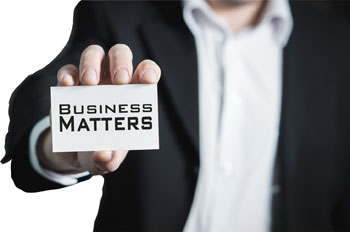By Ron Kustek
The question is how do we first turn our customers into happy customers, and then get them to be loyal customers? The key is in understanding this is a 2-phase process which requires us to know our customers as much as possible, and that they understand how we value them for who they are, thankful for them visiting our business and buying from us.
 Whether you sell online or in a physical store, or both, knowing details about your customer is the first part of making them happy. A customer is a relationship, and to use a dating analogy — on your first date you don’t know that much about the other person, so you ask questions. You ask questions to get to know them, what do they like or not like. So getting to know what your customer likes or dislikes is extremely important.
Whether you sell online or in a physical store, or both, knowing details about your customer is the first part of making them happy. A customer is a relationship, and to use a dating analogy — on your first date you don’t know that much about the other person, so you ask questions. You ask questions to get to know them, what do they like or not like. So getting to know what your customer likes or dislikes is extremely important.
And we cannot make assumptions. Just because they smiled and bought a service or item from you doesn’t mean they’re going to be happy when they get home to use or wear their item. If they leave with a smile, whether that’s from your website, restaurant or storefront, how do you know they’re smiling beyond that post-purchase moment?
Studies show if someone has a good experience with your business, they’ll tell on average 4-6 people. If someone has a negative experience with your business, they’ll tell 12-16 people! It’s critical to know how each customer feels after they’ve bought and left your business.
 That’s why establishing a connection — a relationship with each customer is so vitally important. And to keep with the dating analogy, just because the other person smiled after your date doesn’t necessarily mean they had a good time (sorry).
That’s why establishing a connection — a relationship with each customer is so vitally important. And to keep with the dating analogy, just because the other person smiled after your date doesn’t necessarily mean they had a good time (sorry).
But unlike dating, we can survey our customers directly, we can thank them for their review and/or we can interact with them on social platforms once they’ve shared pictures of their purchase. This is all part of what is known as “Customer Relationship Management.”
- Emailing Customers: Collecting customer emails is still a very important marketing and communications tool for your business.
You can have customers opt-in to your email list from your website, or you can collect their email or text info from an intake form or quick survey given to them during their purchase. You’ll need to collect customer emails and commit to using email for thank you messages as well as emailing newsletters that provide helpful, relevant and valuable information each time you email your customers in the future.
- Review Thanking: This is also a much-needed step in developing your relationship with each customer, especially those that post reviews. If they spent the time and effort posting a review, either positive or negative, you will need to put forth an even greater effort to thank them for their review or offer assistance in resolving any issue they’ve posted.
- Social Platforms: Similar to reviews, if your customer has been especially happy with their purchase, they will likely be sharing that experience with their friends on twitter, Instagram, Snapchat or Facebook depending on which platforms they favor (which you’ll know from the customer survey you’ve done). Being able to know when and how you’re being talked about is extremely important, as you can engage publicly with your customer — both current and future — because all will be seeing how you gratefully respond. And remember, being conversational and thankful is the best approach, resisting the urge to be self-promoting.
There are companies that can make parts of this process much easier with the help of their software tools. You may be using SQUARE for your credit card processing, and they offer a suite of helpful customer management tools so you know when each customer last made a purchase, what they bought, how much they spent and how loyal they are.
Another company is FiveStar, which uses a customer’s phone number each time they ‘sign in’ to your business, so you are able to track their purchase history. This allows you to communicate with customers to develop their loyalty by offering return customer discounts and more, all via text messages instead of email.
Customer loyalty happens over time, and develops with multiple contacts and experiences between business and customer. When you begin viewing each customer as the most important asset of your business, you’ll be on your way to better understanding how to keep them satisfied and returning today, tomorrow and into the future.
•••
Ron Kustek is a former senior marketing executive at The Coco-Cola Co. and entrepreneur who currently teaches business at Cabrillo College. Contact him at [email protected].
